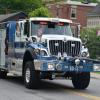Sign in to follow this
Followers
0

Tanker Shuttle/Water Drill: Dover Station #2 area on the grounds of the former Harlem Valley Psch. Center: 10/23/10
Started by
markmets415,
-
Recently Browsing 0 members
No registered users viewing this page.
